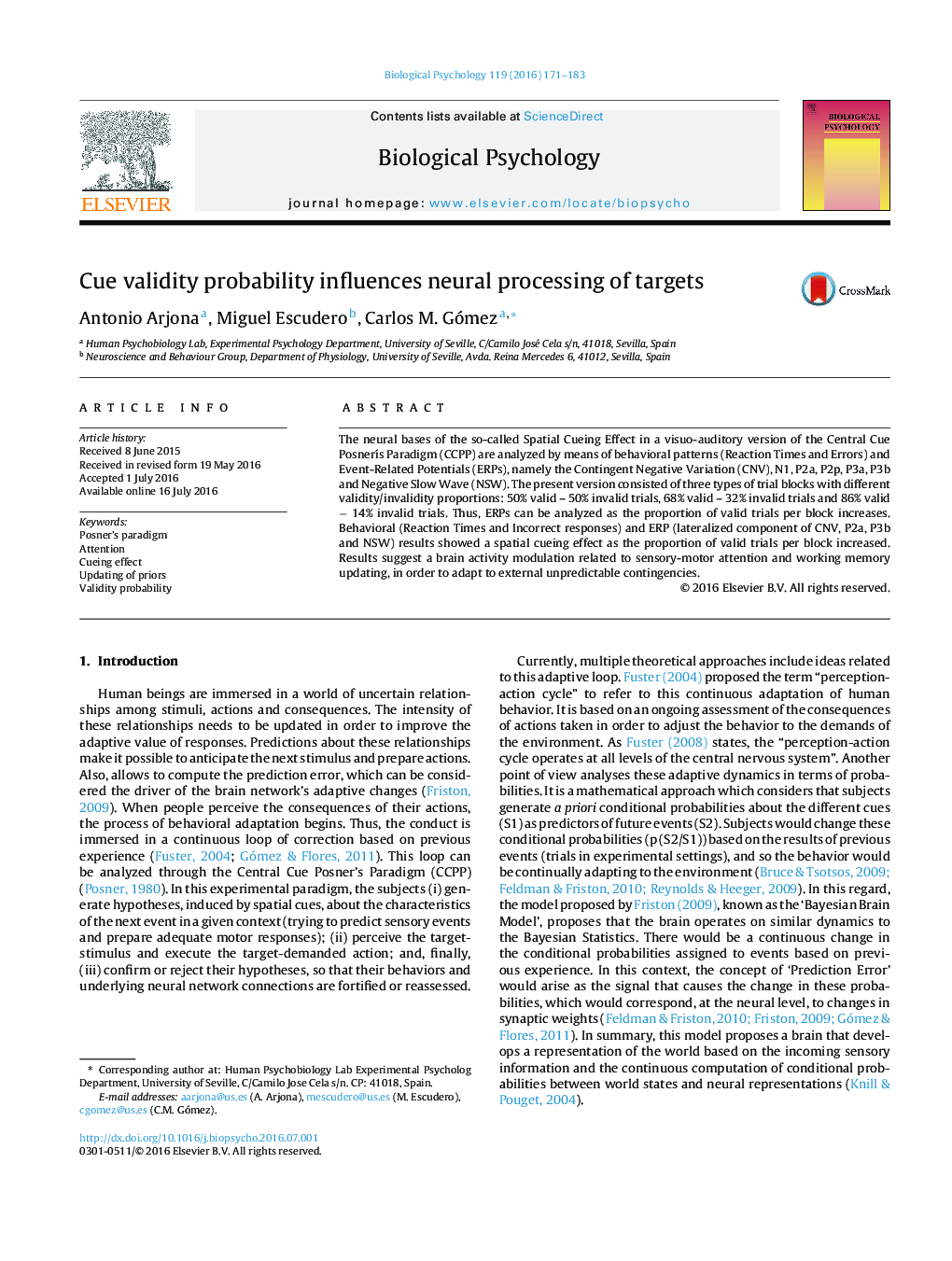| Article ID | Journal | Published Year | Pages | File Type |
|---|---|---|---|---|
| 920750 | Biological Psychology | 2016 | 13 Pages |
•Higher RTs difference (invalid vs valid) as the proportion of validity increases.•Higher number of Incorrect responses as the proportion of validity increases.•Differences in lateralized component of CNV as the proportion of validity increases.•Differences in P2a, P3b and NSW as the proportion of validity increases.•There is an attentional modulation and working memory updating by block probability.
The neural bases of the so-called Spatial Cueing Effect in a visuo-auditory version of the Central Cue Posneŕs Paradigm (CCPP) are analyzed by means of behavioral patterns (Reaction Times and Errors) and Event-Related Potentials (ERPs), namely the Contingent Negative Variation (CNV), N1, P2a, P2p, P3a, P3b and Negative Slow Wave (NSW). The present version consisted of three types of trial blocks with different validity/invalidity proportions: 50% valid – 50% invalid trials, 68% valid – 32% invalid trials and 86% valid − 14% invalid trials. Thus, ERPs can be analyzed as the proportion of valid trials per block increases. Behavioral (Reaction Times and Incorrect responses) and ERP (lateralized component of CNV, P2a, P3b and NSW) results showed a spatial cueing effect as the proportion of valid trials per block increased. Results suggest a brain activity modulation related to sensory-motor attention and working memory updating, in order to adapt to external unpredictable contingencies.
